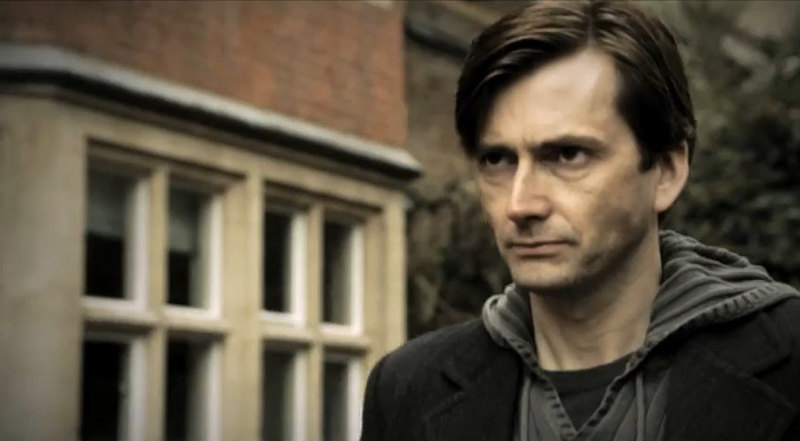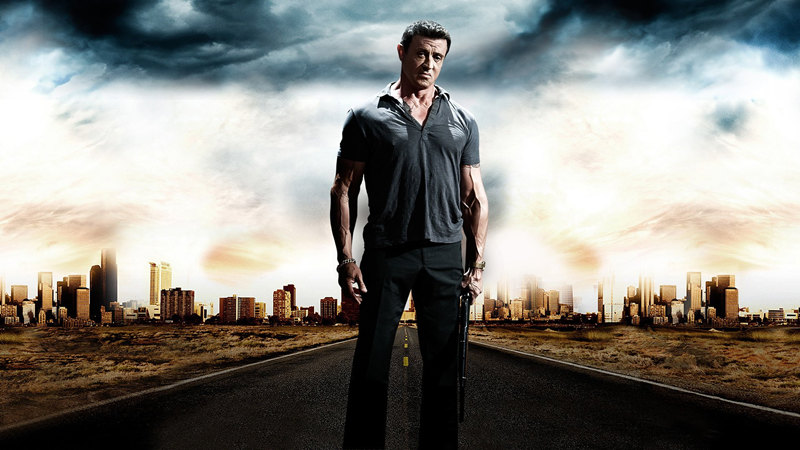A gangster, “A,” tells a person, “B,” that he is not happy with another gangster “C,” and that person, “C,” is not happy with a gangster “D.” The gangster “D” kills a gang member, “E,” and later finds out that person “E” works for the person “C.” Then gangster “C” orders his men to kill everyone in person “D’s” gang. Person “C’s” gang splits, and now a person “F,” working for gangster “C,” starts killing. Are you with me so far? If not, then you are not alone. Indeed, the plot of “Outrage” (2010) is utterly complex, and it is hard to keep track of gang members, their alliances, and their motives. A confusing plot, at times, can lead to a challenging narrative, if there is an expressive story and memorable characters. Unfortunately, “Outrage” is excessively stylized and often too complex for its own good, and that much of the story fails to make any impression.
Director Takeshi Kitano fabricates another Yakuza story, giving emphasis to the inner workings of the Yakuza gangs. Throughout the story, we witness gruesome violence, especially in the finger-chopping scenes. In one scene, a rival Yakuza member is driven by a gangster to a far off highway, only to be decapitated by a nearby pole. Why not just kill the guy right there instead of employing a brutal killing? This scene, along with the finger-chopping scenes, underlines that Yakuza gangs seldom forgive rival gangs, if things go bad or if one is pushed to the extreme. Depending on the situation, even if there is an apology, it carries a heavy price, which is fulfilled by sacrificing a finger. Certainly, violence is an essential part of Yakuza gangs, demonstrating their strengths, survival techniques, and dangerous criminal ways. In spite of the grisly violence, however, the film also underscores the honor code by which these gangs operate. If as a group they decide to stay out of the drug business, then it is the moral duty of the other member gangs to do everything within their means to live by the “code.” Surely, the greed of making more money catches up with a few, and this forms the heart of the film’s story.
The first act focuses on different gangs and how they are organized under one head. The “bad” and “good” guys are hard to figure out initially, and it becomes problematic later on. As the plot progresses, we realize everyone is “bad,” and we are ultimately left to pick sides, however bad it might be in the end. Besides, this makes the characters in the movie all the worse. With too much attention on violence, the script fails to deliver a meaningful spotlight on key players. We see an aging Yakuza member, Ôtomo (Takeshi Kitano), executing orders from his bosses, but the focus on him comes very late in the story. Ôtomo’s character is pushed and he goes on a shooting spree. Even in his old age, Ôtomo is a strong-willed person who is not going to back down easily. Ôtomo understands at some point he has to walk out from the violent Yakuza world. Despite Ôtomo’s helpless state in the end, we never sympathize or feel emotionally vested in his character, partly owing to lack of details. Likewise, other characters merely act as pedestrians and performers of violence. The story fails to build any momentum, and it’s mostly a slow, talkative ride. From a narrative perspective, there are so many distracting characters that it becomes hard to focus on one specific character. For instance, we see Ôtomo’s men, probably behind his back, working out a shady deal with a Guyanese diplomat. The segment goes for an extended length, and it has no significant bearing on the overall story.
Director Takeshi Kitano is a multifaceted artist who, in the past, has worked as a director, songwriter, play writer, composer, presenter, and author. His films mainly portray the Yakuzas and the police force. I haven’t seen his earlier works, so I can’t compare “Outrage” to the other films in the Yakuza genre. But as a stand-alone Yakuza piece, “Outrage” fails to impress in any way.
Video:
Magnolia presents “Outrage” in an aspect ratio of 2.35:1, encoded using an AVC codec. The 1080p is warm-looking, with splendid detail and sharpness. The palette is devoid of any bright colors, and we predominantly see the greys and blacks; the blacks, however, are solid. The detail on close-ups and long shots is consistently superb, and sharpness stays consistent throughout without appearing soft. Finally, the flesh tones are lifelike, with no trace of extra smoothing.
Audio:
Mainly a dialogue-driven film, “Outrage” has a few action sequences in which gunshots are heavy and realistic. The low frequencies kick in during the action segments. It is also in the action sequences that the surround channels are activated. The dialogue comes out consistently clean and clear. Additionally, the film can be viewed with English subtitles.
Extras:
In the segment, “Cast Interview – Making Outrage,” all the actors from the film discuss their characters and their working relationship with Takeshi Kitano. Next, “Outrage Inside Out” is a regular making-of featurette, taking us on the sets with raw footage and a few brief interview segments. Following this, “Cast Panel Interview” shows Kitano and several other actors providing insights on the production, characters, and story. Next, “Premiere Q&A” shows the cast during the film’s premiere discussing Kitano’s working style. Up next, “Cannes Red Carpet Premiere with Takeshi Kitano” shows Kitano at Cannes. Finally, there is a theatrical trailer, followed by international TV spots.
Parting Thoughts:
Under Takeshi Kitano’s direction, “Outrage” had a lot of potential to entertain and be meaningful. Unfortunately, with a weightless script, a choppy narrative structure, and unneeded visceral violence, “Outrage” is a forgettable experience. The Blu-ray edition performs well in the audio and video aspects. Recommended for fans of the genre.


